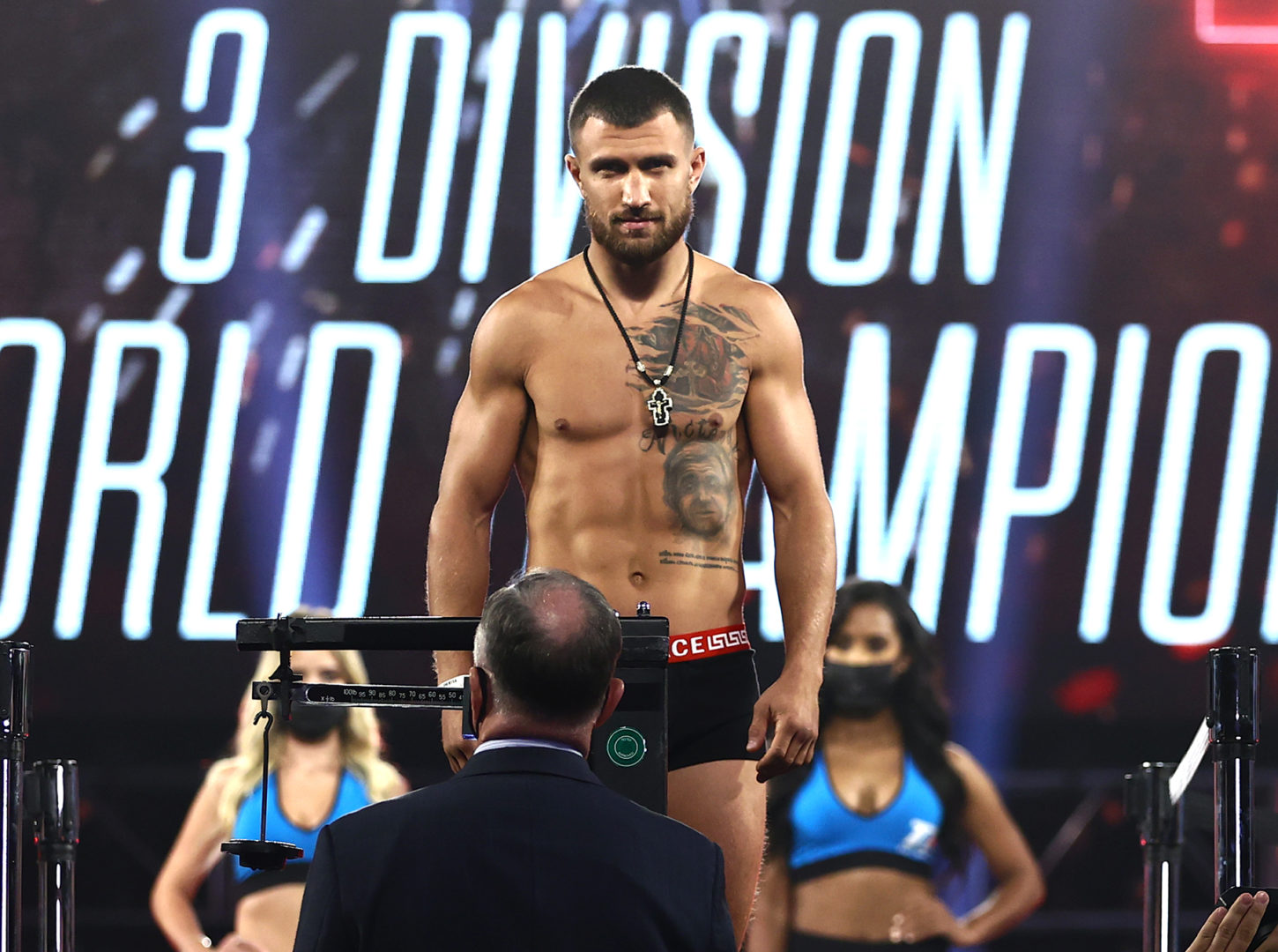
By Norm Frauenheim-
It’s a lawsuit that probably shouldn’t surprise anybody. Its inevitability was evident throughout an awkward news conference a couple of months ago.
Bob Arum and Terence Crawford looked like a couple headed to divorce court after Crawford’s stoppage of Shawn Porter on Nov. 20.
The fight itself was worth celebrating. But the post-fight newser was troublesome, another sign of a game going nowhere. Arum frowned. Crawford, whose Top Rank contract expired the second Porter’s dad/trainer threw in the towel, said he was moving on. Wednesday, we found out where he’s headed.
For now, at least, Crawford is moving only into the legal ring with a lawsuit filed in Las Vegas’ Clark County District Court. The 23-page document accuses Top Rank of racism and breach of contract.
Arum called it frivolous. Crawford’s attorneys called it a lot of other things, most of which mean the same thing. (Insert F-word of choice here). The suit is generating lots of social-media heat. But it’s anybody’s guess whether it does much more than that.
There are some predictions that it’ll go the way of a Golden Boy Promotions anti-trust suit against PBC (Premier Boxing Champions). That one was filed in May 2015. About 19 months later, it was in the trash.
A federal judge dismissed the case in January 2017 because of Golden Boy’s failure “to demonstrate that there is a genuine issue of material fact.’’ Translation: No evidence. Let a judge decide the merits of this one.
But you don’t need a law degree to wonder about the timing. For Crawford, time is everything. He’s 34 now. He’ll be 35 in September. Prime time is slipping through the hour glass. Nineteen months from now, he’ll be nearly 36.
Right now, he needs a fight more than a lawsuit against his former promoter
Nothing in a legal brief or a courtroom will further Crawford’s claim on the top spot in the pound-for-pound debate or enhance his Hall of Fame legacy. He can do that only in the boxing ring.
Maybe, that move is forthcoming. Maybe, he’ll announce his next fight tomorrow or next week, or next month. Maybe, the lawsuit is the first step toward a deal with another promoter in what would be a new chapter to an otherwise unappreciated career.
This lawsuit, like any other, will wait. Even if it moves forward to a trial, it will sit forgotten on a docket long after the due date on its relevance has expired.
Crawford’s brilliance in the ring – he’s still No. 1 in this pound-for-pound rating – hasn’t been complemented by what he’s done, or not done, outside of the ropes.
The lawsuit’s many issues center around the allegation that Top Rank failed to turn him into a pay-per-view star. His PPV record is dismal, including a reported 130,000 customers for his powerful statement win against Porter.
Those PPV numbers have left him with little bargaining power, despite his pound-for-pound acclaim. The public clamors for Crawford to fight Errol Spence Jr.
But Spence is demanding a 60-40 share of the total purse, because his PPV record proves he’s the bigger draw. Fifty-fifty or nothing, counters Crawford, who is as proud as he is defiant.
So far, it’s been nothing, nada.
Do you blame stubborn demands from both corners? Do you blame Top Rank for failing to fulfill alleged promises it can’t really keep? Do you blame a shrinking boxing market? Boxing’s gilded age – the Manny Pacquiao-Floyd Mayweather era – is gone.
For now, boxing’s traditional ranks (sorry, Jake Paul) include only one proven PPV star – Canelo Alvarez. He followed Mayweather. They turned themselves into PPV stars. They broke with their promoters.
Mayweather paid Arum $750,000 to get out of his Top Rank contract in 2006. At the time, he was collecting Crawford-like wages — between $3 and $5 million per fight. Crawford earned a reported $6 million for his victory over Porter.
In November 2020, Canelo split with Oscar De La Hoya’s Golden Boy Promotions. His $250-million complaint “was resolved to everyone’s satisfaction,’’ De La Hoya said at the time.
Both took a risk that Crawford did not. A lawsuit won’t change that.























